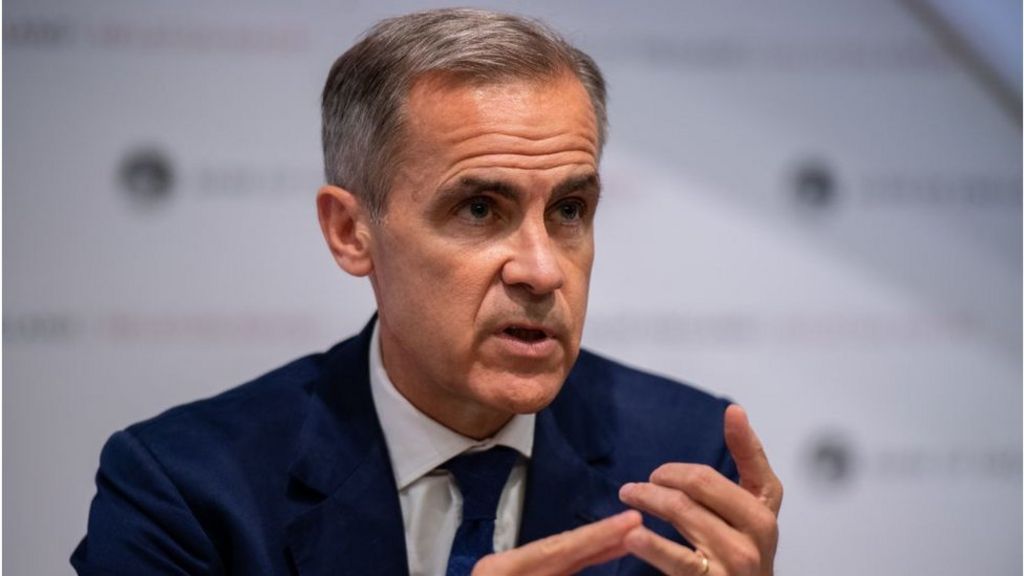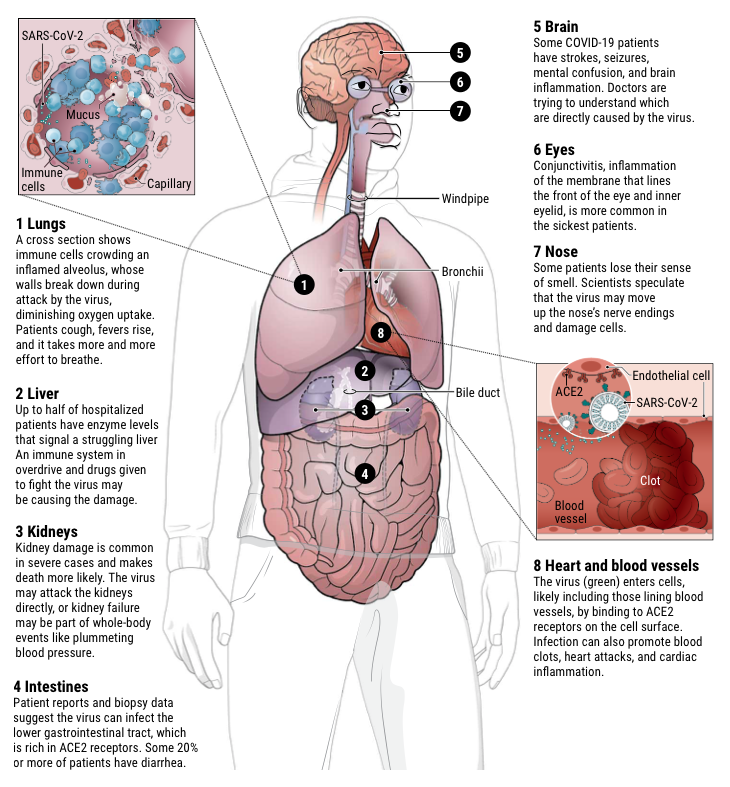Mark Carney on how the economy must yield to human values In recent years, the market economy has become the market society. The virus could reverse that trend ....... Value will change in the post-covid world. On one level, that’s obvious: valuations in global financial markets have imploded, with many suffering their sharpest declines in decades. More fundamentally, the traditional drivers of value have been shaken, new ones will gain prominence, and
there’s a possibility that the gulf between what markets value and what people value will close
. ................ Current financial-market valuations reflect profound uncertainty over the path of the virus and the length of time that the global economy will remain shuttered. How many quarters of earnings will be lost? How quick will the recovery be once it comes? ............. the very real opportunities the crisis has revealed: in teleworking, e-health, distance learning, and the acceleration across our economies from moving atoms to shifting bits. ........ As our digital and local lives expand and our physical and global ones contract, this sea change will create and destroy value. Creativity and dynamism will still be highly prized ........ the crisis is likely to accelerate the fragmentation of the global economy. Until a vaccine has been found and widely applied, travel restrictions will remain. Even afterwards, local resilience will be prized over global efficiency .......... much of the enterprise value of companies will be taken up by extraordinary financial support and destroyed by lost cashflow. Their higher debt will increase the riskiness of the underlying equity and weigh on the capacity for growth. ..........The financial relationship between the state and the private sector has already deepened dramatically.
......... the searing experience of the simultaneous health and economic crises will change how companies balance risk and resilience. ....... Which companies will operate with minimal liquidity, stretched supply chains and token contingency plans? Which governments will rely on global markets to address local crises? .........Entire populations are experiencing the fears of the unemployed and sensing the anxiety that comes with inadequate or inaccessible health care. These lessons will not soon be forgotten.
.......... in recent decades, subtly but relentlessly, we have been moving from a market economy to a market society. Increasingly, to be valued, an asset or activity has to be in a market. For example, Amazon is one of the world’s most valuable companies, yet the Amazon region appears on no ledger until it is stripped of its foliage, and converted to farmland. The price of everything is becoming the value of everything. ...............This crisis could help reverse that relationship, so that public values help shape private value.
.......... When pushed, societies have prioritised health first and foremost, and then looked to deal with the economic consequences. In this crisis, we know we need to act as an interdependent community not independent individuals, so the values of economic dynamism and efficiency have been joined by those of solidarity, fairness, responsibility and compassion. ............. a test of stakeholder capitalism. When it’s over, companies will be judged by “what they did during the war”, how they treated their employees, suppliers and customers, by who shared and who hoarded. .......The great test of whether this new hierarchy of values will prevail is climate change. After all, climate change is an issue that (i) involves the entire world, from which no one will be able to self-isolate; (ii) is predicted by science to be the central risk tomorrow; and (iii) we can only address if we act in advance and in solidarity.
........... Mark Carney was governor of the Bank of England.We Still Don’t Know How the Coronavirus Is Killing Us Over the last few weeks, the country has managed to stabilize the spread of the coronavirus sufficiently enough to begin debating when and in what ways to “reopen,” and to normalize, against all moral logic, the horrifying and ongoing death toll — thousands of Americans dying each day, in multiples of 9/11 every week now with the virus seemingly “under control.” ......... how deadly it is to how many people caught it and shrugged it off to how long immunity to the disease lasts after infection (if any time at all). .......... The World Health Organization got so worried about the much-touted antiviral remdesivir, which received a jolt of publicity (and stock appreciation) a few weeks ago on rumors of positive results, the organization leaked an unpublished, preliminary survey showing no benefit to COVID-19 patients. ............. one survey in New York City found that 21 percent of residents may have COVID-19 antibodies already, making the city not just the deadliest community in the deadliest country in a world during the deadliest pandemic since AIDS, but also the most infected (and, by corollary, the farthest along to herd immunity). ........... How is COVID-19 actually killing us? .............. Early in the epidemic, the coronavirus was seen as a variant of a familiar family of disease, not a mysterious ailment, however infectious and concerning. But while uncertainties at the population level confuse and frustrate public-health officials, unsure when and in what form to shift gears out of lockdown,
the disease has proved just as mercurial at the clinical level, with doctors revising their understanding of COVID-19’s basic pattern and weaponry — indeed often revising that understanding in different directions at once
. ................. “is there any other virus out there that is this weird in terms of its range of symptoms?” .......... as many as 70 percent of patients sick enough to be admitted to New York State’s largest hospital system did not have a fever. ............ Cough is more common, according to Brigham and Women’s, with between 68 percent and 83 percent of patients presenting with some cough — though that means as many as three in ten sick enough to be hospitalized won’t be coughing. .......... As for shortness of breath, the Brigham and Women’s estimate runs as low as 11 percent. The high end is only 40 percent, which would still mean that more patients hospitalized for COVID-19 do not have shortness of breath than do. At the low end of that range, shortness of breath would be roughly as common among COVID-19 patients as confusion (9 percent), headache (8 to 14 percent), and nausea and diarrhea (3 to 17 percent). ............... That the ranges are so wide themselves tells you that the disease is presenting in very different ways in different hospitals and different populations of different patients — leading, for instance, some doctors and scientists to theorize the virus might be attacking the immune system like HIV does, with many others finding the disease is triggering something like the opposite response, an overwhelming overreaction of the immune system called a “cytokine storm.” ................... front-line doctors have been expressing confusion that so many coronavirus patients were registering lethally low blood-oxygenation levels while still appearing, by almost any vernacular measure, pretty okay .............88 percent of New York patients put on ventilators, for whom an outcome as known, had died. In China, the figure was 86 percent.
............... the ability of the disease to mutate has been “vastly underestimated” — investigating the disease as it appeared in just 11 patients, they said they found 30 mutations. “The most aggressive strains could generate 270 times as much viral load as the weakest type” ............ Based on early reports, covid-19 appeared to be a standard variety respiratory virus, albeit a very contagious and lethal one with no vaccine and no treatment. But they’ve since become increasingly convinced that covid-19 attacks not only the lungs, but also the kidneys, heart, intestines, liver and brain. ....................“a clear picture is elusive, as the virus acts like no pathogen humanity has ever seen.”
.......... the following organs as being vulnerable to COVID-19: brain, eyes, nose, lungs, heart, blood vessels, livers, kidneys, intestines. ........... Heart damage was discovered in 20 percent of patients hospitalized in Wuhan, where 44 percent of those in ICU exhibited arrhythmias; 38 percent of Dutch ICU patients had irregular blood clotting; 27 percent of Wuhan patients had kidney failure, with many more showing signs of kidney damage; half of Chinese patients showed signs of liver damage; and, depending on the study, between 20 percent and 50 percent of patients had diarrhea. ............... in New York and Wuhan, between 14 and 30 percent of ICU patients had lost kidney function, requiring dialysis. .............. “[y]oung and middle-aged people, barely sick with COVID-19, are dying from strokes.” Many of the patients described didn’t even know they were sick .......... The patient’s chart appeared unremarkable at first glance. He took no medications and had no history of chronic conditions. He had been feeling fine, hanging out at home during the lockdown like the rest of the country, when suddenly, he had trouble talking and moving the right side of his body. Imaging showed a large blockage on the left side of his head. ............only 53 percent of COVID-19 patients have died from respiratory failure alone.
.......... the degree to which doctors and scientists are, still, feeling their way, as though blindfolded, toward a true picture of the disease cautions against any sense that things have stabilized, given that our knowledge of the disease hasn’t even stabilized.the coronavirus pandemic is not just a public-health crisis but a scientific one as well.
....... tens of thousands dead and literally billions in precautionary lockdown, we are still in the very early stages, when each new finding seems as likely to cloud or complicate our understanding of the coronavirus as it is to clarify it. Instead, confidence gives way to uncertainty. ......... In the space of a few months, we’ve gone from thinking there was no “asymptomatic transmission” to believing it accounts for perhaps half or more of all cases, from thinking the young were invulnerable to thinking they were just somewhat less vulnerable, from believing masks were unnecessary to requiring their use at all times outside the house, from panicking about ventilator shortages to deploying pregnancy massage pillows instead. Six months since patient zero, we still have no drugs proven to even help treat the disease. Almost certainly, we are past the “Rare Cancer Seen in 41 Homosexuals” stage of this pandemic. But how far past?If we get COVID-19 and you have one the following preexisting condition, risk of dying varies (as per the data). So let us be careful if we have any preexisting condition.
Condition ------------------ death chance (%)
Cadiovascular dis (13.2%)
Diabetes (9.2%)
Chronic Resp dis (8.0%)
Hypertension (8.4%)
Cancer (7.6%)
No preexisting condition (0.9%)
Source: worldometers.info
https://www.facebook.com/permalink.php?story_fbid=2600391186915298&id=100008333262342
In less than three months, the coronavirus pandemic has killed more people in the U.S. than the 58,220 Americans who died over nearly two decades in Vietnam.
Posted by NPR on Tuesday, April 28, 2020
The invader's impact... SARS-CoV-2 lands in the lungs and can do deep damage there. But the virus, or the body’s response to it, can injure many other organs. #COVID19 https://t.co/3K96LiJrRP pic.twitter.com/PoR71YjaX8
— Frits Franssen (@fritsfranssen) April 21, 2020
Coronavirus News (60) https://t.co/90R58QFSfX #coronavirus #COVID19 #lockdown #pandemic #TrumpPressConference #TrumpOwnsEveryDeath #TrumpGenocide
— Paramendra Kumar Bhagat (@paramendra) April 28, 2020



No comments:
Post a Comment